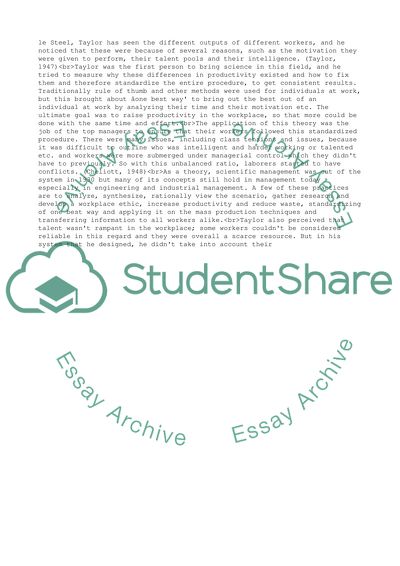Cite this document
(Scientific Management was the product of 19th Century industrial Essay - 10, n.d.)
Scientific Management was the product of 19th Century industrial Essay - 10. Retrieved from https://studentshare.org/management/1787964-scientific-management-was-the-product-of-19th-century-industrial-practices-and-has-no-relevance-to-the-present-day-discuss
Scientific Management was the product of 19th Century industrial Essay - 10. Retrieved from https://studentshare.org/management/1787964-scientific-management-was-the-product-of-19th-century-industrial-practices-and-has-no-relevance-to-the-present-day-discuss
(Scientific Management Was the Product of 19th Century Industrial Essay - 10)
Scientific Management Was the Product of 19th Century Industrial Essay - 10. https://studentshare.org/management/1787964-scientific-management-was-the-product-of-19th-century-industrial-practices-and-has-no-relevance-to-the-present-day-discuss.
Scientific Management Was the Product of 19th Century Industrial Essay - 10. https://studentshare.org/management/1787964-scientific-management-was-the-product-of-19th-century-industrial-practices-and-has-no-relevance-to-the-present-day-discuss.
“Scientific Management Was the Product of 19th Century Industrial Essay - 10”. https://studentshare.org/management/1787964-scientific-management-was-the-product-of-19th-century-industrial-practices-and-has-no-relevance-to-the-present-day-discuss.


